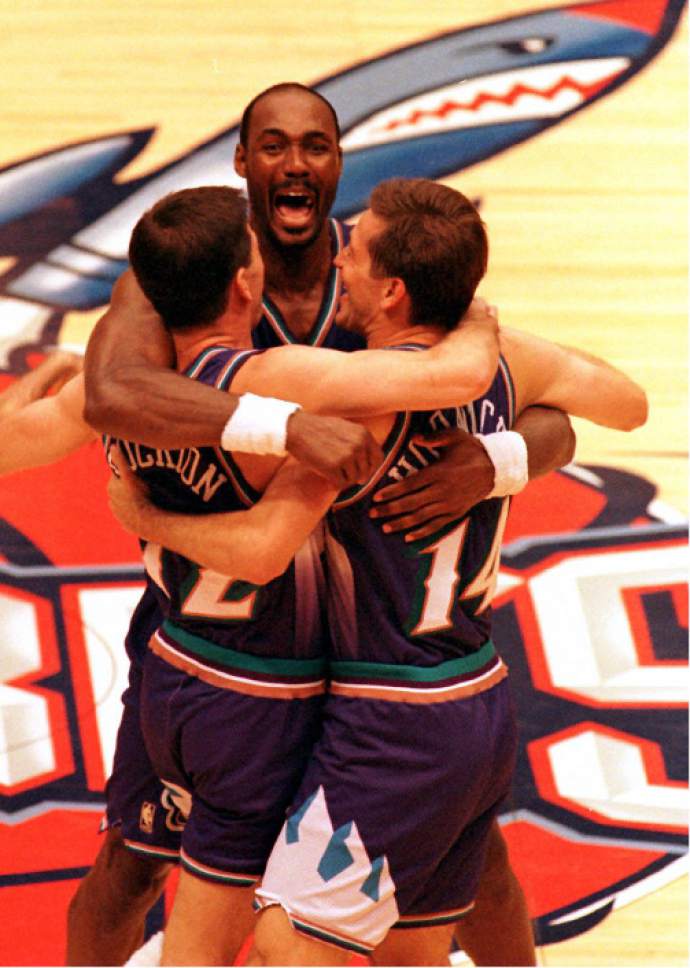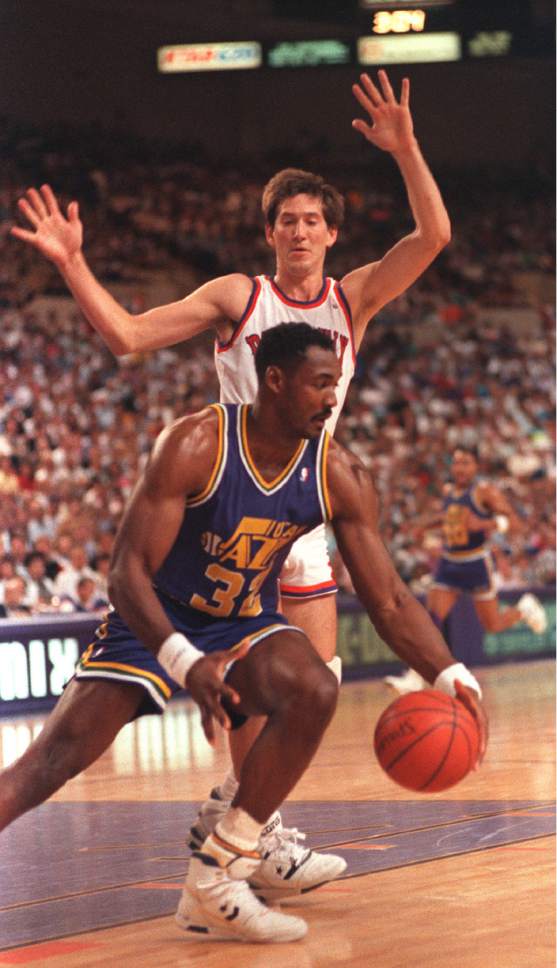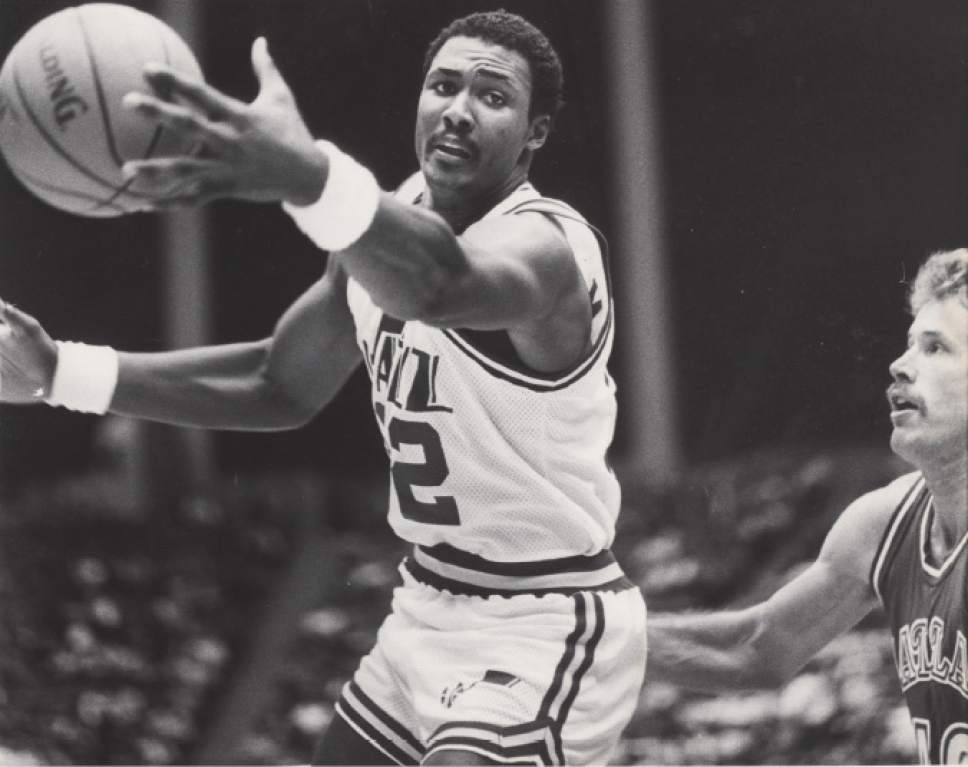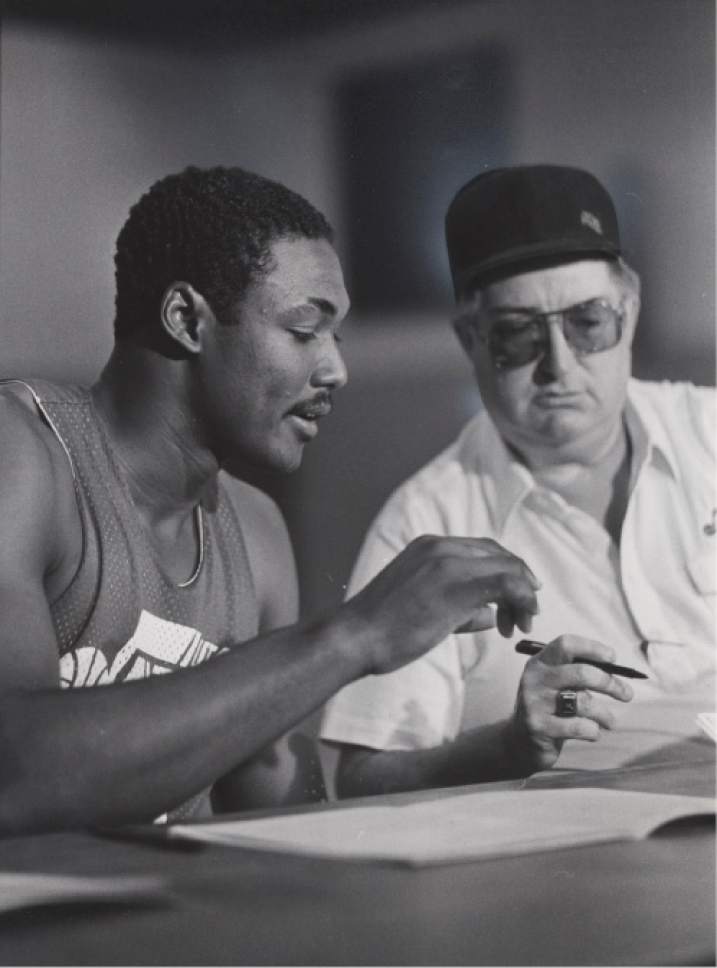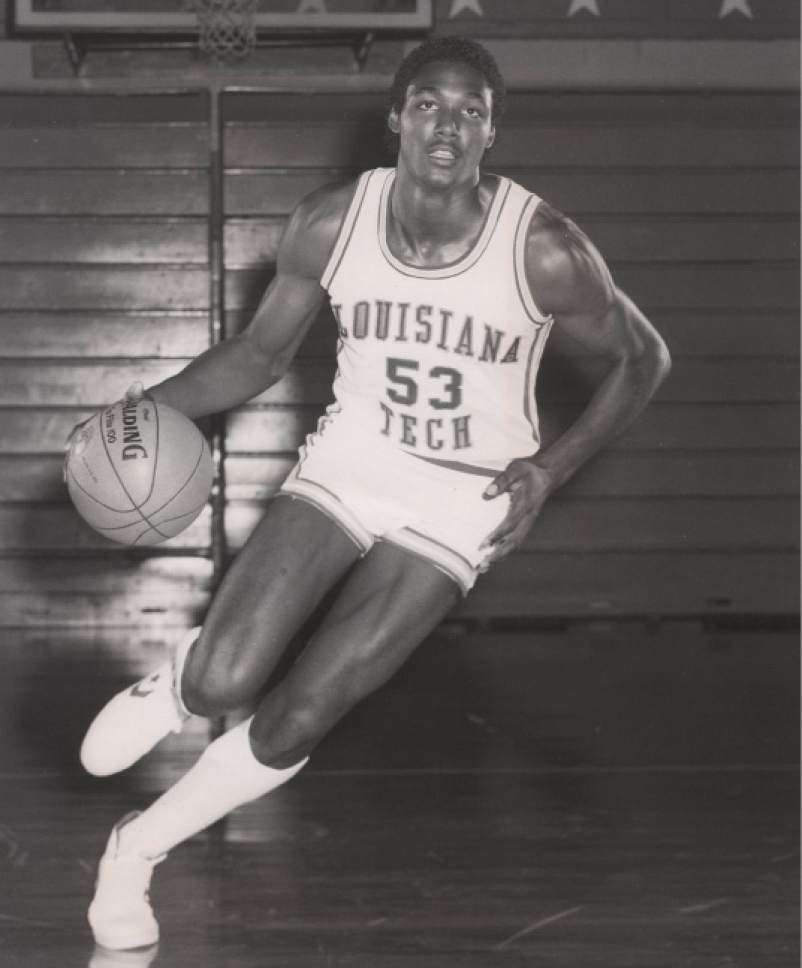This is an archived article that was published on sltrib.com in 2015, and information in the article may be outdated. It is provided only for personal research purposes and may not be reprinted.
Late last week, after a group of NBA hopefuls had just finished working out for Jazz officials in Salt Lake City, general manager Dennis Lindsey sat on the bleachers at the Zions Basketball Center, chatting with a few reporters about the upcoming draft and giving away none of his secrets.
If you talked to 10 coaches, 10 scouts and 10 general managers, Lindsey surmised, they'd all generally agree on a prospect, his skills and weakness, on who can play.
"The real trick, the real pixie-dust magic that happens is how good can you [rank] them," he said.
And then he admitted that, for all the work, all the hours that go in to the process, sometimes, success in the draft comes down to luck.
Sometimes "a Karl Malone comes to the high desert and becomes a fitness fanatic and literally outruns every power forward in the history of the game," he said. "Those are the kind of good luck things you want to happen that, maybe, if all of us were humble, we'd just say, 'Hey, we didn't predict that.'"
Of course Jazz brass could not have predicted 30 years ago they would be calling the name of a future Hall of Famer when they made their pick in the 1985 draft.
Not even close.
They were lucky to even call his name.
That summer, coming off a 41-41 season, the Jazz of 1985 found themselves in a similar spot as this year's Jazz, picking 13th overall. There might be a nice player there. But a star?
"I don't foresee us getting a starter or a guy who's going to come in and turn the franchise around," Scott Layden, then the team's chief scout, told Desert News beat writer and future Tribune columnist Kurt Kragthorpe in the run up to the draft.
But the 1984-85 season would turn out to be a pivotal one.
"It was one of the most important years in franchise history," David Fredman, the team's director of pro player personnel, and one of the original employees who made the trek with the club from New Orleans to Salt Lake City.
The season started with coach and general manager Frank Layden bringing on Jerry Sloan as an assistant. In April of that year, Larry H. Miller purchased 50 percent of the team for about $8 million.
And then came the June draft.
The final touches on the process began about a week before the draft, when the Jazz brain trust, including Fredman and Sloan went to the Laydens' cabin in Ogden Canyon for a scouting retreat.
"We hadn't seen an awful lot of players personally, maybe a little bit from television and what have you. It was interesting because we were looking at players and the obvious players that were good popped up," Layden recalled recently. "But I'll never forget that evening, Scott said, 'I have a film here of a guy. He played for Louisiana Tech and he's got a nickname, the Mailman. He said, 'This guy's a bruiser. He's tough. But he won't be there when we pick.'"
The Jazz took a look — and they loved what they saw.
"I just said, Oh my gosh. This guy is one tough cookie. He can really work it, rebounding and what have you. He's ready," Layden said.
"I remember Jerry kept saying, 'I like the Mailman because he delivers," Fredman said.
"So anyway, we forgot about him," Layden said.
Instead, Jazz officials turned their hopes, publicly even, to another power forward: Keith Lee, the 6-foot-10 Lee prospect who had been a four-time All-American at Memphis State.
According to a Tribune report from June 1985:
"I think Lee would be at the top of the list," Layden said. The list includes Lee, St. John's center Bill Wennington, Oregon center Blair Rasmussen, and Virginia Union forward Charles Oakley. At this point, it's probably fair to say that one of those four players will be Utah's first-round pick Tuesday. "Lee and Wennington probably are head of Rasmussen and Oakley," said Scott Layden, who knows that there is a possibility both Lee and Wennington will be gone by the time the Jazz pick. And if those two are gone and it comes down to a Rasmussen-Oakley decision, Scott said, "If it got down to push-and-shove time, I think Rasmussen would hold the edge because he could potentially play two positions."
The Jazz brought Lee to Salt Lake City for a physical exam and interview, which Layden recalled being something of a luxury for him and his staff at a time when resources were thinner.
"When you go back to those days, it wasn't much different than what we had when I first came in the league and most teams had just one coach," Layden said. "I learned to count on old friends. I called my old college buddies. We were counting on the magazines, newspapers, the Sporting News. And then we'd hear something about some guy and we'd call a trainer that we knew or a coach that we knew. We didn't have much. Not like today when they have scouts living out in the areas."
A year earlier, the Jazz surprised many by picking John Stockton, of whom Layden first became thanks to a tip from Weber State coach Neil McCarthy.
"I had seen Stockton live, but I never saw him in a game," Layden said. "We couldn't even get films on Stockton. His school didn't take many films. We saw him at the Chicago tryout camp. The first time I met him was in an elevator. We were going up in the hotel. We chatted for a few minutes at the time and I was sizing him up to see how big he was."
Malone wasn't exactly an unknown; he had played three years at Lousiana Tech.
But Layden had never met him or seen him play live.
Regardless, Malone was projected to be long gone by the time the Jazz picked. It seemed like the coveted Lee would be gone, too, which would have left point guard Terry Porter as their third choice behind Malone and Lee.
Then the Memphis State forward's stock started to slip just before the draft.
"Lee is suddenly being treated like a leper by NBA talent evaluators, except for one team — the Jazz," Tribune beat writer Lex Hemphill wrote the day of the draft. "The Jazz are hoping Lee's stock has slipped enough to have him slide down to their No. 13 position in the draft, and then they will hope that his ability hasn't slipped accordingly."
Draft day, the morning of June 18, 1985, started exactly as everyone knew it would, with the New York Knicks taking Georgetown center Patrick Ewing. Wayman Tisdale, the best power forward in college basketball went next. Benoit Benjamin, Xavier McDaniel, Jon Koncak, and Joe Kleine followed. Chris Mullin went to Golden State, Detlef Schrempf to Dallas.
With each pick, Layden and company would taking down names off their board in the Salt Palace.
All of a sudden, there was a glut of power forwards.
"We weren't quite sure what we are going to do, but Scott came to me and said, 'I don't know why it's happening, I'm going to make some calls and find out, but Karl Malone is sliding down here.'"
Frank Layden felt panic first.
"I got scared," he said. "I started to wonder. Why was he slipping? Did other people know something we didn't know? Was there something wrong with him physically?"
There are a few possibilities why he fell
From a New York Post report earlier this year:
In '85, as an assistant coach and talent scout for Phoenix, Al Bianchi recommended three power forwards for the 10th pick in the draft: Charles Oakley of Virginia Union, Ed Pinckney of NCAA champ Villanova and Karl Malone of Louisiana Tech. Bianchi went to dinner with Malone. "He was too nice," said Bianchi, later the Knicks general manager. "I was looking for a mean streak." Malone, when he heard the story, shrugged. "He should have told me. I would have busted up a table or something," Malone said.
The story that came back to Frank Layden was a different one.
"His coach was not giving him high marks," the former Jazz GM recalled. "He's tough to handle and he has a temper and all these things."
Meanwhile, Malone kept slipping.
Oakley went ninth to Cleveland. The Suns took Villanova's Ed Pinckney at 10 and Lee went 11th to the Bulls, leaving the Washington Bullets on the clock. The night before, at the trade deadline, Washington had moved Greg Ballard for Dan Roundfied, shifting their focus from power forward to small forward. So with the 12th pick, the Bullets grabbed Wake Forest's Kenny Green, who would go on to play in just 60 games over three seasons in the NBA.
If there were questions about Malone, the Jazz had an answer.
"We've got to take a chance," Layden said and laughed. "And, sure enough, we picked a Hall of Famer. That's how smart we were."
A year earlier, the crowd at the Salt Palace responded to the Stockton announcement mostly with silence and boos.
This time, after Layden stepped to the microphone and announced, "We're going to bring a Mailman to Utah," the crowd of 5,000 erupted in cheers.
Malone, in a dapper powder blue suit was brought to tears.
Basketball in Utah would never be the same.
— Aaron Falk



